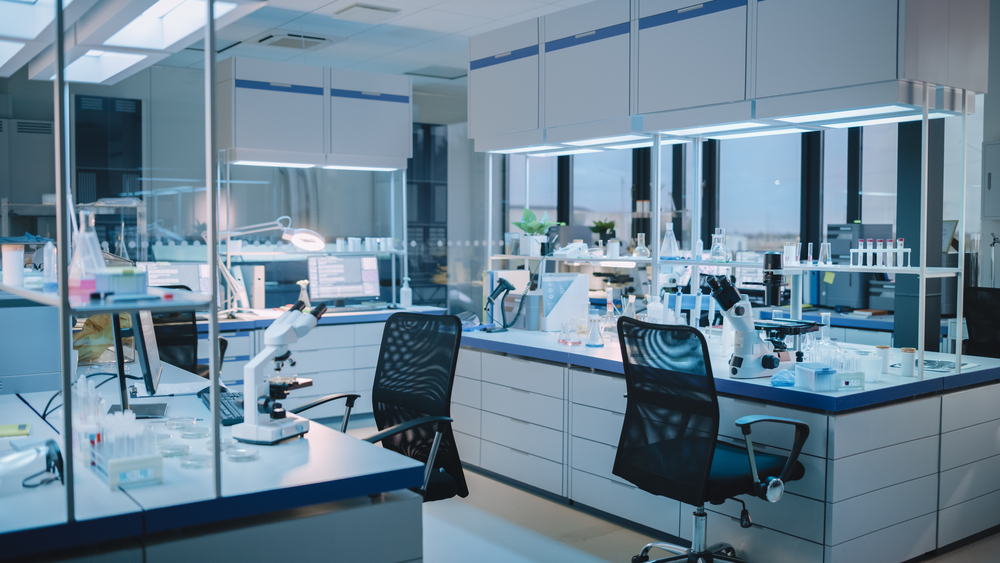
Meticulous planning and thoughtful design are key elements for wet laboratory construction to create spaces that foster groundbreaking scientific research while prioritizing the safety and efficiency of laboratory operations. The unique challenges posed by wet labs, where experiments involve liquid substances, chemical reactions, and biological materials, require careful consideration of various factors.
From layout and equipment placement to safety measures and environmental controls, every aspect plays a crucial role in the success of wet laboratory construction projects.
In this article, we explore the primary planning and design considerations that architects, lab planners, and researchers should keep in mind to create state-of-the-art wet lab facilities that meet the demands of modern scientific exploration.
What is a Wet Lab?
Contrary to a dry lab which focuses on computation, physics, and engineering, a wet lab refers to a laboratory environment where experiments are conducted using liquid chemicals, solutions, and biological materials. The term “wet” is used to highlight the presence of liquids in the experimental procedures. Wet labs are commonly associated with biological, chemical, and biomedical research where scientists and researchers manipulate and analyze substances in liquid form.
In a wet lab, experiments often involve techniques such as mixing, diluting, pipetting, culturing cells, conducting chemical reactions, and other processes that require the use of liquids. This contrasts with “dry labs,” where computational and theoretical approaches are employed, and physical substances are not directly manipulated.
Wet labs are essential for various scientific disciplines, including molecular biology, biochemistry, pharmacology, and analytical chemistry, where hands-on experimentation with biological samples, chemicals, and other liquid substances is crucial for understanding and advancing scientific knowledge.
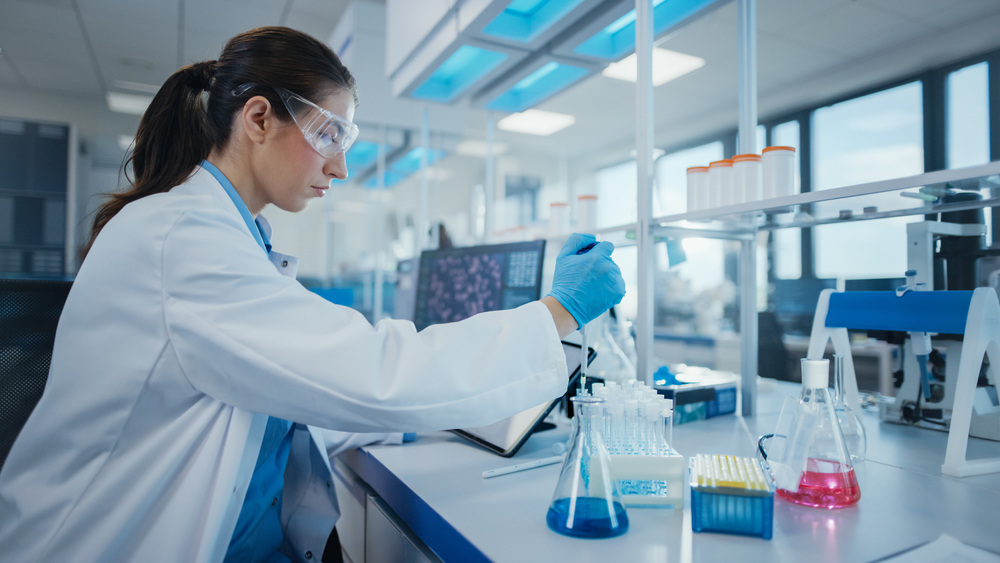
Wet labs are commonly found in various settings, including:
- Academic Institutions like universities and research laboratory institutions
- Hospitals and Medical Research Centers
- Pharmaceutical Companies
- Biotechnology Companies
- Government Research Facilities
- Chemical Industry
- Environmental Research Institutions
- Food and Beverage Industry
- Forensic Laboratories
- Educational Institutions
These are just a few examples, and wet labs can be found in various other settings depending on the nature of the research and experimentation requirements.
What are the Differences Between a Wet Lab and a Dry Lab?
For wet laboratory construction, it’s important to consider the specific needs of the experiments to be conducted and ensure that the facility meets safety and regulatory standards. The main differences between wet labs and dry labs lie in the nature of the experiments conducted, the types of techniques employed, and the materials used. Here are some key distinctions between the two:
1. Nature of Experiments:
- Wet labs involve hands-on experiments with biological materials, chemicals, and solutions in liquid form.
- Dry labs involve computational and theoretical approaches, with little or no direct manipulation of physical materials.
2. Techniques:
- Experimental techniques in wet labs include pipetting, culturing cells, chemical reactions, and other processes that require the manipulation of liquid substances.
- Computational modeling, data analysis, simulations, and statistical analysis are common techniques in dry labs.
3. Materials:
- Researchers in wet labs work with biological samples, reagents, and other substances in liquid or solution form.
- The primary materials in dry labs are data, algorithms, and computer simulations. Physical samples or chemicals are not typically manipulated.
4. Equipment:
- Common equipment in wet labs includes pipettes, microscopes, centrifuges, and other tools for handling liquids and biological samples.
- Dry labs require computers, software, and analytical tools for data processing and modeling.
5. Examples:
- Molecular biology, biochemistry, pharmacology, and analytical chemistry often rely on wet lab techniques.
- In contrast, bioinformatics, computational biology, theoretical chemistry, and certain areas of physics are examples of fields where dry lab techniques are prevalent.
It’s worth noting that in many research settings, a combination of wet lab and dry lab techniques may be used. This interdisciplinary approach, often referred to as “wet-dry integration,” allows researchers to leverage the strengths of both approaches to gain a more comprehensive understanding of scientific phenomena.
Primary Planning and Design Considerations for Wet Laboratory Construction
Designing a wet lab involves careful planning to create a functional and safe environment that meets the specific needs of the research activities to be conducted. Here are some primary planning and design considerations for wet laboratory construction:
1. Wet Laboratory Layout and Zoning
Plan the lab layout to optimize workflow and facilitate efficient communication among researchers. A typical wet laboratory is often organized into different zones, each serving specific functions and accommodating various activities. When planning wet laboratory construction, the specific layout and organization may vary based on the nature of the research and the types of experiments conducted, and also whether it is a new construction. Here are common zones found in a wet lab:
- Reagent and Chemical Storage Zone: This area is dedicated to the storage of chemicals, reagents, and solutions used in experiments. Proper storage, labeling, and segregation of different chemical types are essential in this zone.
- Sample Preparation Zone: Researchers prepare biological samples, reagents, and solutions for experiments in this zone. It may include workstations for measuring, mixing, and aliquoting substances.
- Instrumentation Zone: This zone houses laboratory instruments such as spectrophotometers, centrifuges, microscopes, electron microscopes, and other analytical equipment. Proper spacing and accessibility are crucial for efficient workflow.
- Biological Work Zone: For experiments involving living organisms or biological materials, this zone may include biosafety cabinets, incubators, and other equipment necessary for cell culture and microbiological work.
- Radioactive Work Area: Wet labs used for radioactive work typically have designated areas or sections that are specifically designed to handle radioactive materials. These areas, including safe storage facilities, are often referred to as “hot labs” or “radio chemistry labs.” The purpose of these separate areas is to ensure the safety of researchers and to prevent the spread of radioactive contamination.
- Waste Handling Zone: Proper disposal of waste, including hazardous materials, is critical. This zone features waste collection areas and may include designated storage for different types of waste.
- Wet Bench Zone: Wet benches are central work areas for conducting experiments. These are equipped with utilities such as water, gas, and electrical outlets, allowing researchers to perform various tasks.
- Fume Hood Zone: Fume hoods are essential for handling volatile chemicals or conducting reactions that produce fumes. This zone is dedicated to fume hoods to ensure proper ventilation and safety.
- Equipment and Instrumentation Support Zone: This area provides space for storing additional laboratory equipment, spare parts, and tools necessary for the maintenance and support of instruments.
- Cold Storage Zone: Refrigerators and freezers for storing biological samples, reagents, and other temperature-sensitive materials are organized in this zone.
- Controlled Environment Areas (warm or cold rooms): Establishing controlled environment areas like hot or cold rooms, aka cleanrooms, in a wet lab can be crucial for certain experiments and processes. These control areas help maintain specific temperature conditions, which are often essential for the stability and success of experiments involving sensitive materials, biological samples, or chemical reactions.
- Dry Lab or Computational Zone: In some cases, wet laboratory construction may include an adjacent dry lab or computational zone for data analysis, computer simulations, and other non-wet experiments.
- Office and Administrative Zone: Administrative areas may include offices for principal investigators, researchers, and administrative staff. This zone provides space for planning, documentation, collaboration, and communication. Include areas for collaboration and meetings within or adjacent to the lab space. Wet laboratory construction can include meeting rooms, write-up spaces, and common areas for discussions. This promotes communication among researchers and facilitates teamwork.
- Utility Access Zone: Spaces for utility access, including utility closets, service corridors, and access points for maintenance, are strategically placed for efficient maintenance of the lab infrastructure.
The design and layout of these zones are influenced by factors such as safety regulations, the specific requirements of the research conducted, and the overall flow of laboratory work. Efficient zoning helps create a well-organized and functional wet lab that promotes productivity and safety.
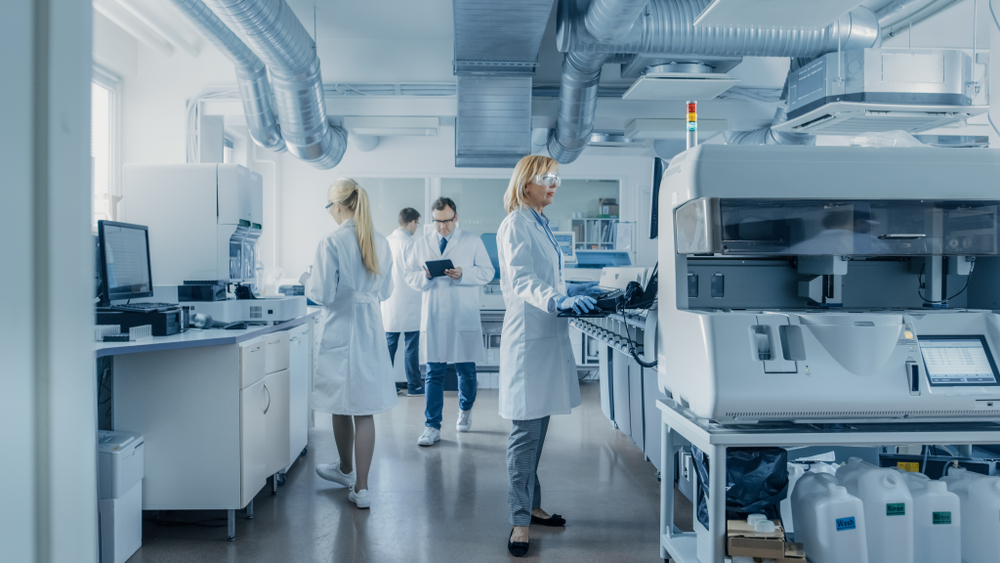
2. Equipment and Instrumentation Placement
The strategic placement of equipment and instrumentation in a wet lab is a pivotal aspect of laboratory design, significantly influencing the efficiency, safety, and overall functionality of the workspace. Careful consideration in this regard optimizes workflow and enhances the quality and reliability of scientific experiments.
Strategically place equipment to ensure accessibility, proper ventilation, and ease of maintenance. Plan for adequate bench space, and consider the location of utilities such as gas, water, and electrical outlets. Also, consider the need for vibration-free floors, power requirements, and environmental controls for sensitive equipment.
3. Utilities and Services
Plan for sufficient utility services, including water, gas, electricity, and data connections for wet laboratory construction. Special attention should be given to the placement of sinks, outlets, and gas lines.
Utility services can also include compressed air, vacuum, and pneumatic supply, as well as natural gas, O2, and CO2.
Piped in hot and cold water often includes reverse osmosis (RO) or deionized water and distilled water.
Ensure that these services are distributed strategically throughout the lab to meet the needs of different workstations.
4. Surface Material Selection
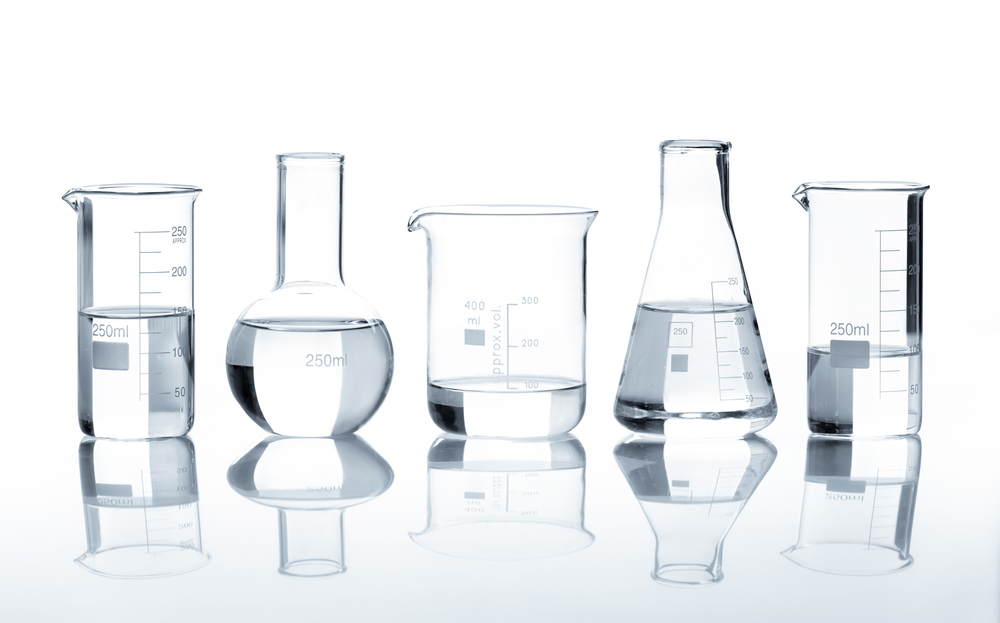
When planning a wet laboratory construction project, choose materials for benches, flooring, sinks, and walls that are resistant to bacteria and chemicals, easy to clean, and minimize the generation of particles. Consider materials that are compatible with the specific experiments to be conducted. These could include hardwood, epoxy resin, stainless steel, or any other commonly used laboratory work surface and sink material.
The following product performance criteria may be appropriate in the work surface selection process.
- Chemical Resistance: Work surfaces should be tested for chemical stain resistance to both volatile and non-volatile chemicals when choosing materials.
- Abrasion and Scratch Resistance: The likelihood of uses causing abrasion, wear, or scratches to the countertops and other work surfaces, or sinks should be considered.
- Bacteria Resistance: The work surfaces and sink’s ability to resist, support, or promote bacterial growth, and also the decontamination or disinfection of the surfaces are matters to consider.
- Ease of Cleaning: Labs working with pathogens and radioactive isotopes, may be required to select non-porous materials and smooth surfaces for their lab bench work surfaces.
- Water Absorption: Consider the effects of moisture on bench tops, other work surfaces, and sinks.
- Appearance: It is not only initial, but also long-term appearance that is important. Furthermore, sometimes performance characteristics are influenced by color, so users should seek the supplier’s advice when selecting colors.
- Heat/Cold Resistance and Thermal Shock: The range of temperatures to which the work surface and sink may be exposed as well as the duration of the exposure at temperatures within the range are important aspects to consider.Also, if rapid temperature changes may be encountered, e.g., dry ice in the sink could cause thermal shock to the surface material, and heat may cause blisters, cracks, and breakdowns in the work surface material.
- Flammability/Flame Spread: Ascertain whether sources of flame may be encountered or if there are code requirements for the intended use.
- Impact Resistance: The likelihood, nature, and level of impact objects might cause to the work surface and sinks must be considered.
- Load Bearing Capability: The maximum loads that the work surface and sink will be an aspect to consider when determining the extent of support underneath the work surfaces and sinks should also be included in the assessment.
5. Storage
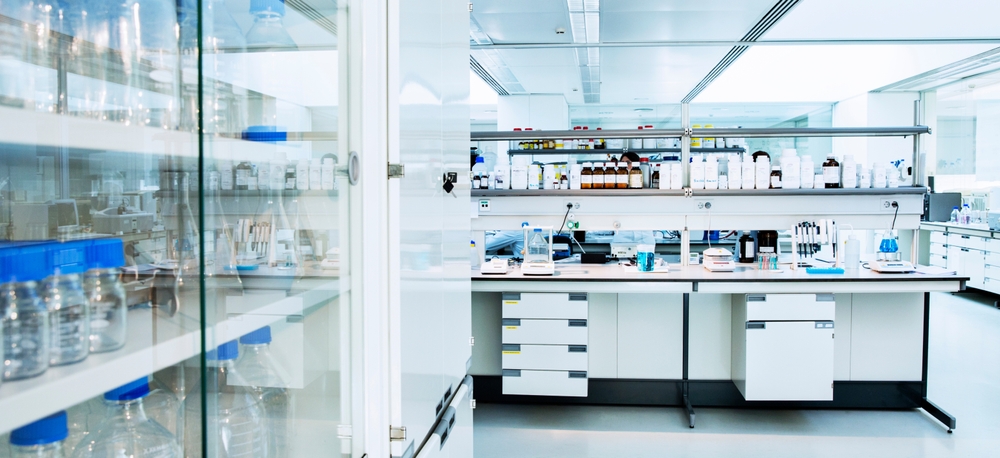
In wet laboratory construction, many factors must be considered when developing a storage plan, including the types of materials to be stored, quantities, sensitivity to sunlight, moisture, and other chemicals. Some different types of acids shouldn’t be stored together, some chemicals require special allowances for venting and special caps that will vent in case of gas pressure buildup.
Design adequate storage space for equipment, chemicals, reagents, and biological samples. Include proper shelving, storage cabinets, casework, and refrigeration units. It is recommended that wet labs have specialized refrigerators and freezers for storing tissue and other specimens. These specialized units are designed to maintain specific temperature and humidity conditions, ensuring the preservation of biological samples. They are designed to prevent cross-contamination and maintain the integrity of the stored specimens.
Implement proper storage solutions for chemicals, ensuring that incompatible substances are stored separately. Large facilities often have storage rooms. Provide adequate ventilation, fume hoods, and spill containment measures. Implement a systematic storage system to minimize clutter and improve organization. Ensure proper labeling and segregation of storage areas based on safety and compatibility.
The following compounds typically form part of a chemical storage plan:
- Acids
- Base Compounds
- Water Reactive Chemicals
- Oxidizers
- Toxic compounds
6. Chemical Fume Hoods
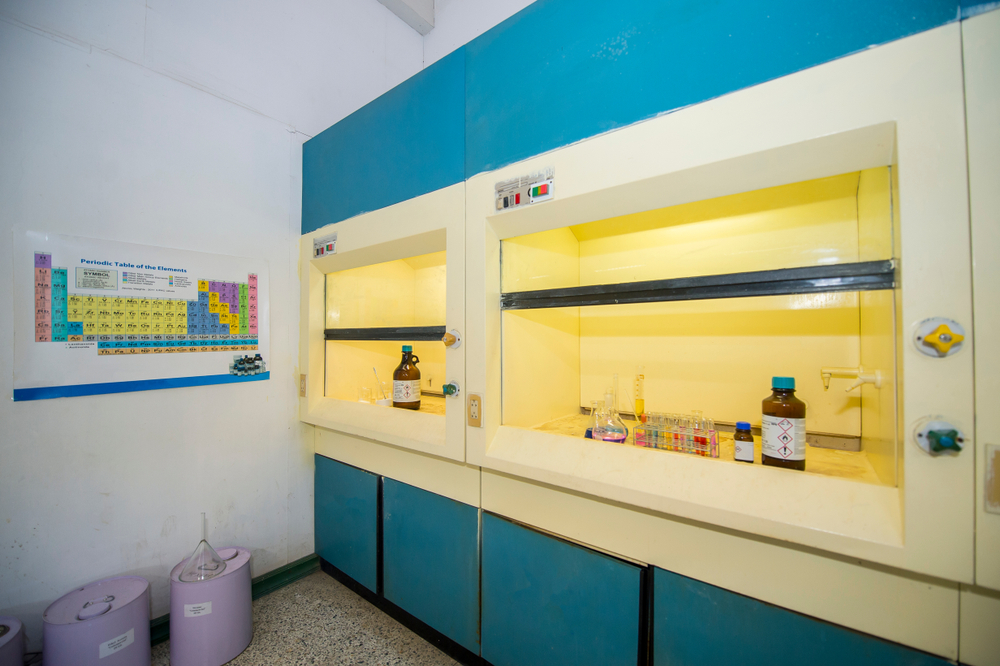
In wet laboratory construction, it’s important to choose laboratory fume hoods that are suitable for the specific needs and chemicals used in the wet lab to ensure effective containment and protection. In wet labs, researchers frequently work with corrosives, chemicals, solvents, and other substances that may produce harmful fumes.
Laboratory fume hood exhaust systems and ductwork should be balanced with room exhaust systems and may be used in conjunction with room exhaust to provide the necessary room ventilation. Correct placement of the fume hoods in wet labs is crucial.
Laboratory fume hoods are potential locations for fires and explosions due to the use of flammable liquids and the types of experiments conducted in these units. As such, fume hoods should be located within the laboratory so that in the event of a fire or explosion within the fume hood, exit from the laboratory would not be impeded.
Laboratory fume hoods should be located away from high-traffic lanes within the laboratory because personnel walking past the sash opening may disrupt the flow of air into the unit and cause turbulence, drawing hazardous fumes into the laboratory.
Ductless fume hoods may also be considered. A Ductless Hood is equipped with its own independent ventilation system, which forces the contaminated air to travel through a filter and re-circulate it within the room. Unlike traditional fume hoods that vent air outside through ductwork, ductless fume hoods filter and recirculate air within the laboratory space.
7. Dust Control
In wet laboratory construction, it is crucial to maintain a clean and contamination-free environment, especially in experiments where even minute particles can impact results. Here are some common strategies for managing dust in a wet lab:
- High-Efficiency Particulate Air (HEPA) Filters: Install HEPA filters in the HVAC system to trap and remove airborne particles, including dust. This helps maintain clean and controlled air quality within the lab.
- Filtered Airflow: Maintain positive pressure within the lab relative to adjacent spaces, if possible. This can help prevent external contaminants from entering the lab. Additionally, ensure that the airflow direction is designed to minimize cross-contamination.
8. Vibration Controls
In wet labs, vibration controls are essential to minimize or eliminate vibrations that can affect sensitive equipment and experiments such as DNA sequencing.
Wet labs often house delicate instruments and devices that are sensitive to vibrations, such as microscopes, spectrophotometers, and other precision equipment used in biological, chemical, or physical research.
Vibration controls aim to create a stable environment by reducing external vibrations that could disrupt experiments or measurements, and they should be considered during the designing and planning of wet laboratory constructions.
9. Autoclaves and Other Sterilization Equipment
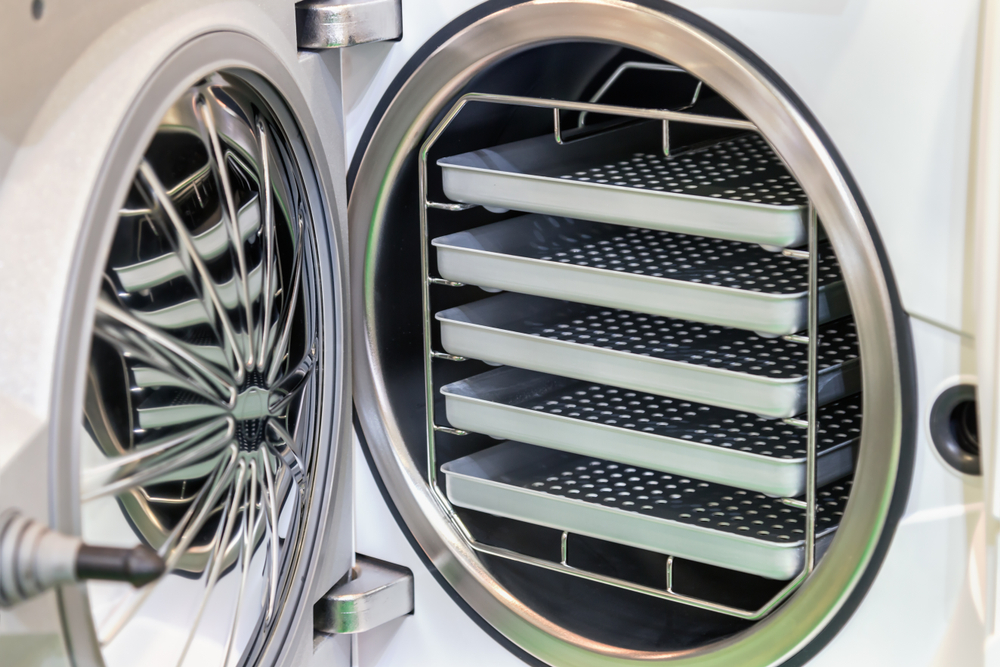
In wet labs, autoclaves are essential pieces of equipment used for sterilizing various materials, such as glassware, instruments, and media. Autoclaves use steam under high pressure to kill bacteria, viruses, fungi, and other microorganisms, ensuring that the equipment and materials are free from contamination.
10. Heating, Ventilation, and Air Conditioning Systems
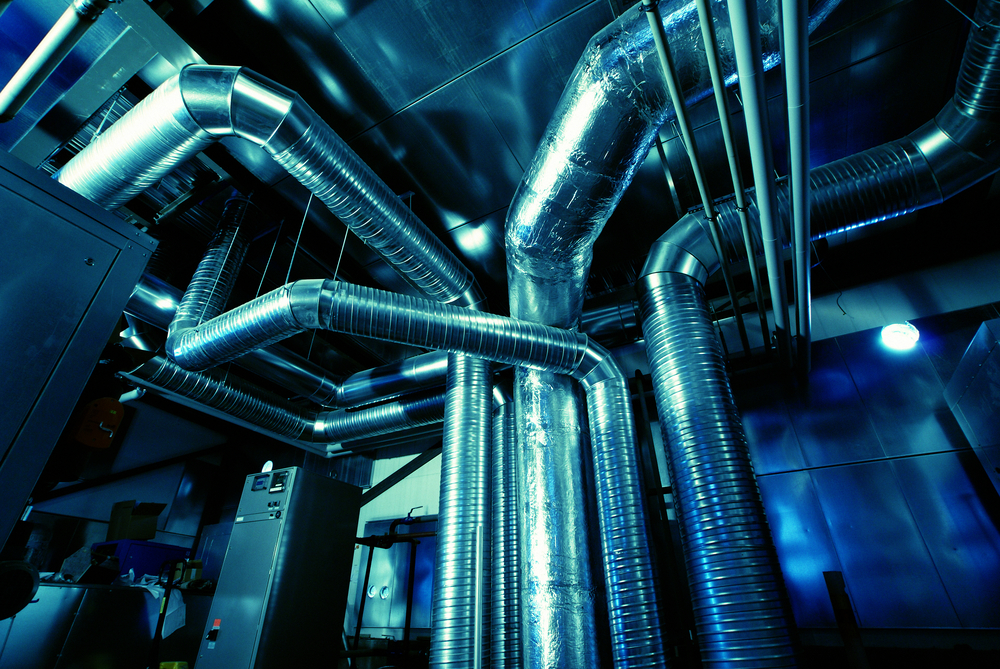
HVAC systems play a crucial role in wet labs and must form part of wet laboratory construction planning from the onset. They supply air and create a controlled environment that is essential for the success of experiments and the safety of researchers. The importance of constant and reliable HVAC in wet labs can be highlighted through various factors:
- Temperature Control: Many wet lab experiments are sensitive to temperature fluctuations. Precise temperature control is critical for reactions, incubation, and the growth of biological cultures. HVAC systems maintain a stable temperature throughout the lab, preventing deviations that could impact experimental outcomes.
- Humidity Control: Humidity levels can affect the stability of reagents, the performance of equipment, and the accuracy of measurements. HVAC systems help regulate humidity, ensuring that it remains within the optimal range for the specific requirements of experiments.
- Air Quality and Ventilation: Wet labs often involve the use of chemicals and biological agents that can release fumes, odors, or contaminants. Proper ventilation through the HVAC system helps remove these substances, maintaining a safe and healthy working environment for researchers. Adequate airflow also prevents the accumulation of potentially hazardous materials.
- Contamination Prevention: Clean and filtered air is crucial for preventing contamination in wet labs, especially in molecular biology and cell culture experiments. HVAC systems equipped with appropriate filters help remove airborne particles, dust, and microorganisms that could compromise the integrity of experiments.
- Equipment Performance: Many laboratory instruments and equipment, such as spectrophotometers and chromatography systems, require stable environmental conditions for optimal performance. HVAC systems contribute to the longevity and accuracy of these instruments by maintaining a consistent lab environment.
In summary, the constant and reliable operation of HVAC systems in wet labs is crucial for avoiding air changes and maintaining the stability, safety, and integrity of experiments. It ensures that researchers can work in controlled environments that support the specific requirements of their experiments and comply with regulatory standards.
11. Waste Management
Design an efficient waste disposal system for both general and hazardous waste. Consider the proper segregation and disposal of chemical, biological, and sharps waste in compliance with regulations.
12. Flexibility and Future Expansion
When planning a wet laboratory construction project, design the lab with flexibility in mind to accommodate changes in research needs over time. Plan for future expansion if required, considering adaptability for evolving technologies. Consider modular furniture, flexible bench arrangements, and adaptable utilities to facilitate future modifications or expansions.
13. Technology Integration
Integrate the necessary technological infrastructure, including power outlets, data ports, and network connectivity. Plan for the installation of specialized equipment such as fume hoods, autoclaves, and analytical instruments for wet laboratory construction.
14. Natural Light and Ergonomics
Incorporate natural light where possible to create a more pleasant working environment. Pay attention to ergonomic considerations when designing workstations, providing comfortable seating, and optimizing bench heights for a new wet laboratory construction.
15. Compliance with Sustainable Practices
Consider sustainable design practices when planning a wet laboratory construction to reduce environmental impact. This may include energy-efficient lighting, water-saving measures, waste reduction strategies, and environmentally friendly materials.
16. Consultation with Lab Users
Involve researchers and lab users in the planning and design process of a wet laboratory construction. Gather input on their specific needs and preferences to ensure that the lab design aligns with practical requirements.
17. Accessibility
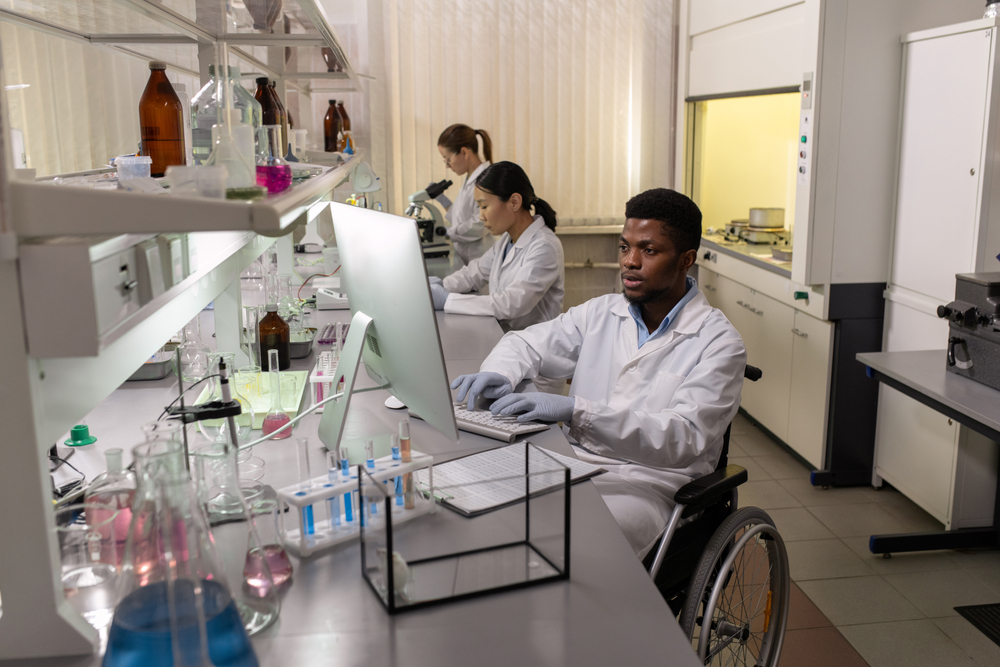
When planning wet laboratory construction, design the lab to be accessible for all occupants, including those with disabilities. Consider the placement of benches, equipment, and storage at appropriate heights.
Any new lab project must consider ABA/Section 504/ADA compliance, the 2010 ADA Standards for Accessible Design published by the Department of Justice, and any state or local accessibility guidelines that may apply. The following are primary considerations for accessible design in laboratories:
- Provide some adaptable furniture systems and adjustable-height work surfaces to accommodate people in wheelchairs.
- Provide one ADA fume hood in each lab. An ADA hood is designed with a sash that opens vertically and horizontally.
- Provide one ADA height (34 in.) sink for each lab.
- Provide one ADA workstation/write-up area in each lab.
- Choose emergency shower handles that can be pushed up to stop the flow. Install pullout shelves in base cabinets.
- Install a lightweight fire extinguisher within reach of a handicapped workstation.
18. Security and Worker Safety
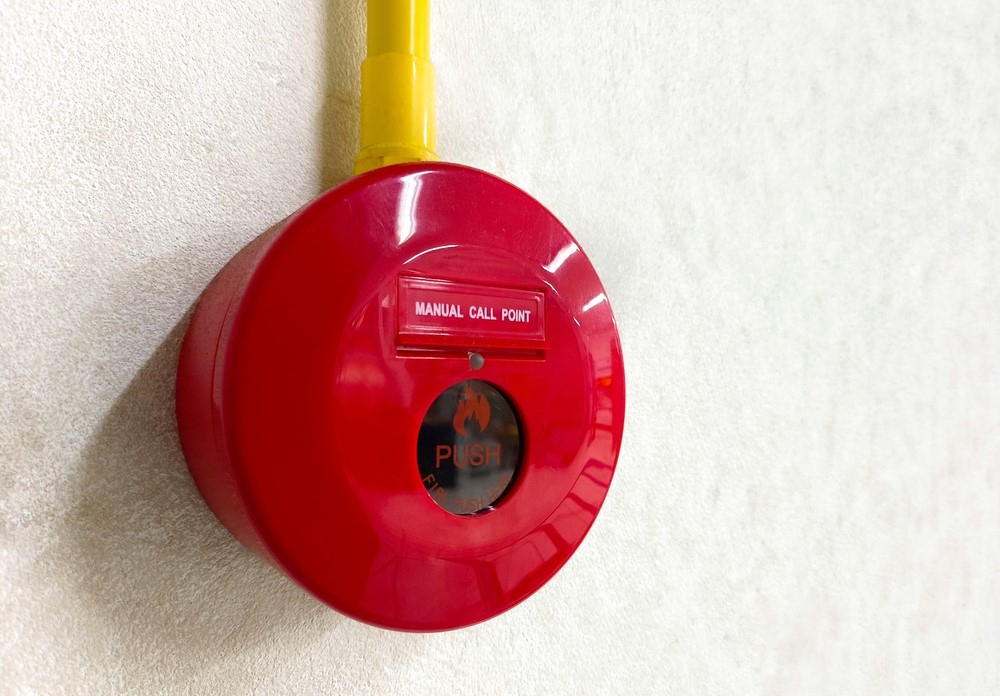
In wet laboratory construction, the entire design must comply with local building codes, safety regulations, fire codes, and industry standards for building systems.
The NFPA (National Fire Protection Association) has several standards related to laboratories, including wet labs. The specific standard that addresses laboratory safety is NFPA 45: Standard on Fire Protection for Laboratories Using Chemicals.
The Hazard Communication Standard (HCS) of OSHA provides the following guidelines to ensure chemical safety in the workplace:
- Security Access Controls: Implement access controls to restrict entry to authorized personnel only. Use key card systems or a computerized security management system (SMS). Install special door hardware locksets or devices that function in unison with the SMS access control methods to secure the lab space.
- CCTV Surveillance: Install closed-circuit television (CCTV) cameras to monitor the laboratory building’s critical areas, entrances, and exits. This enhances overall security and can help investigate incidents.
- Life and Fire Protection: An emergency equipment cabinet containing a hand-held chemical emergency fire extinguisher must be installed in all laboratory spaces. A fire alarm pull station should be placed at every egress point, with an audible and visible (strobe) alarm in each occupiable space.Furthermore, toxic gas monitors should be in each lab module and a gas storage area with audio and visual (strobe) alarms both inside and outside the lab.Eyewash stations, safety showers, and deluge showers should be located at each module to quickly drench an individual in case of exposure to hazardous chemicals or substances.
- Signage: Signage in wet labs is often regulated to communicate important information related to safety protocols, emergency procedures, and the presence of hazardous materials. This can include signs indicating the location of safety equipment, emergency exits, the types of experiments being conducted, and the presence of potentially dangerous substances.
- Biological Safety: Establish containment measures for biological materials, including appropriate biosafety cabinets (BSC) and facilities for working with harmful disease agents or infected tissues without risk of infection.
- Personal Protective Equipment (PPE): Enforce the use of PPE, including lab coats, gloves, safety goggles, and other necessary protective gear. Provide training on the proper use and disposal of PPE.
When designing and planning a wet laboratory construction, the design team needs to consider the specific needs of the experiments to be conducted and ensure that the facility meets safety and regulatory standards.
ANSI, which stands for the American National Standards Institute, develops and publishes voluntary consensus standards for laboratories. ANSI standards are not legally binding, but they are widely adopted and recognized.
Collaborating with experienced lab designers and considering future scalability can also contribute to an efficient and effective wet lab design.
Conclusion
In conclusion, the planning and design of wet labs represent a complex interplay between functionality, safety, and adaptability. Success in wet laboratory construction hinges on a comprehensive understanding of the unique needs of scientific experiments, coupled with adherence to safety regulations and industry standards.
The integration of advanced technologies, attention to environmental controls, and the creation of flexible workspaces are all paramount in fostering an environment where researchers can push the boundaries of scientific knowledge.
As wet laboratory construction projects evolve, collaboration among stakeholders, continuous communication, and a commitment to innovation will ensure the development of cutting-edge facilities that stand at the forefront of scientific discovery.




